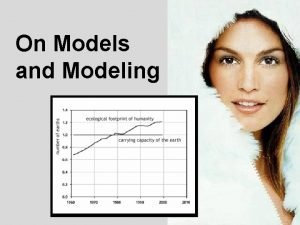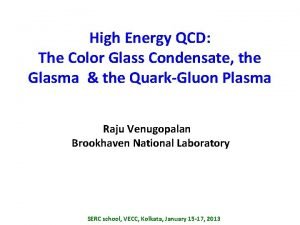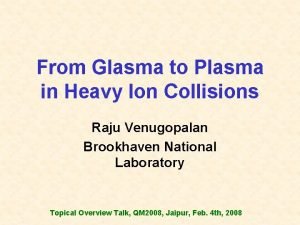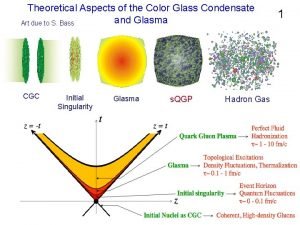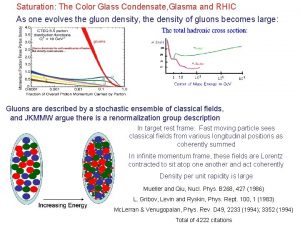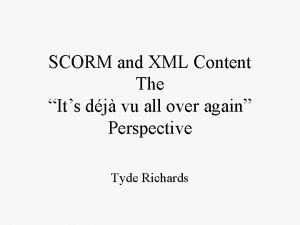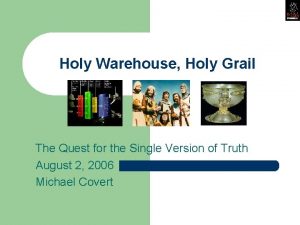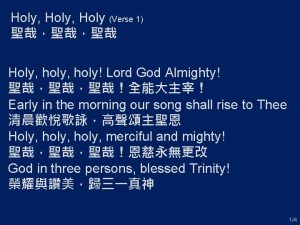The quest for the holy Grail from Glasma











- Slides: 11

The quest for the holy Grail: from Glasma to Plasma Raju Venugopalan Color Glass Initial Condensates Singularity Glasma s. QGP perfect fluid Hadron Gas t CATHIE-TECHQM workshop, Dec. 14 -18, 2009

Nuclear wavefunction at high energies Parton Density x= fraction of momentum of hadron carried by parton At RHIC typical x ~ 0. 01. At the LHC, x ~ 5 * 10 -4 Glue rules! For glue, QS 2 = 1 -1. 4 Ge. V 2 (RHIC) QS 2 = 2. 6 -4 Ge. V 2 (LHC) Kowalski, Lappi, RV, PRL (2008) Nuclear wave function at high energies is a Color Glass Condensate

CGC: effective degrees of freedom Dynamical gauge fields Fields Sources Time dilated, “frozen” random color charges with weight W[ ] 1 Classical eqns: RG eqn. for x evolution of source dist. : resums Sln(1/x) and /k. T 2 contributions in loop corrections Saturation scale QS: Non. Pert. scale in W at x 0 grows with x evol. of RG

From CGC to Glasma Multi-particle production from strong CGC fields: compute systematically properties of strongly correlated Glasma fields after collision Consider T : At LO, can obtain from soln. of classical Yang-Mills eqns. NLO terms are as large as LO for S ln(1/x) - resum to all orders Gelis, Lappi, RV (2008) Glasma factorization => universal “density matrices W” calc. “matrix element”

<T > in the Glasma At RHIC energies, in central A+A, evolution of W’s is not significant - local Gaussian dist. of sources with variance QS 2 ; at LHC, evolution is very significant Krasnitz, Nara, RV (2003) System initially very far from equilibrium! (Tzz <0 for =0+ and ->0 for > 1/QS) Lappi, Mc. Lerran (2006) Initial gauge field configurations are longitudinal chromo-electric & magnetic fields localized in transverse plane - generate Chern-Simons charge Kharzeev, Krasnitz, RV (2002) s 0

Glasma flux tubes-I Dumitru, Gelis, Mc. Lerran, RV (2008) Conjecture based on pert. calculation: Glasma is a collection of “flux tubes” color screened on transverse distances ~ 1/QS If conjecture is true, from geometry, must have v Non-perturbative (soln. of classical QCD!) computation of double inclusive gluon production in Glasma Lappi, Srednyak, RV: ar. Xiv 0911. 2068

Glasma flux tubes-II Three possible scales for color screening: 1/R, m ( QCD), QS For 2 =1, (0. 5 -2) QS 2 Color screening radius ~ 0. 7 -1. 4 QS q Results of non-pert. computation confirm Glasma flux tube conjecture q Flux tube size in same ball park as experiments. Some variation in value depending on observable Quantum evolution of distributions will give additional Iancu, Itakura, Mc. Lerran (2002) screening A. H. Mueller (2003) Long range rapidity correlations -> see Dusling talk ar. Xiv: 0911. 2720

Matching Glasma dynamics to Hydro Classical field / Particle f<1 Ø Current matching of LO Glasma YM computations to hydro - “CGC initial conditions”assumes instantaneous thermalization Ø But T is far out of equilibrium in LO computations Ø No computations to date fully take into account NLO contributions that are as large as LO and should be resummed… eccentricity

Unstable quanta in the Glasma Romatschke, RV (2006) Boost non-invariant quantum fluctuations can grow rapidly for > 0 for 3+1 -D YM simulations Strong disordering could lead to rapid isotropization, “anomalous transport” These quantum corrections, albeit difficult to evaluate, are no less a necessary part of early time dynamics… Asakawa, Bass, Muller (2006) Dumitru, Nara, Schenke, Strikland (2008)

Rapid isotropization in the Glasma Resum - extend range of YM-dynamics Gelis, Lappi, RV (2008) “Holy Grail” Spectrum of small fluctuations Can also compute event by event initial conditions to estimate flow fluctuations: Fukushima, Gelis, Mc. Lerran (2006) Similar in spirit to the event by event hydro code Ne. XSPhe. RIO = Ne. Xus + SPhe. RIO Grassi et al. , ar. Xiv: 0912. 0703

Summary v The early time dynamics of HI collisions can be computed ab initio in a factorization framework v Early time Yang-Mills dynamics reveals structure of the Glasma as a collection of flux tubes color screened on distances ~ 1/QS v Quantum instabilities from the wave-function can lead to early isotropization; significant effects on final states v The factorization framework for n-point correlations is ideally suited to event-by-event analysis v Many interesting conceptual issues in understanding the Glasma -> s. QGP transition

